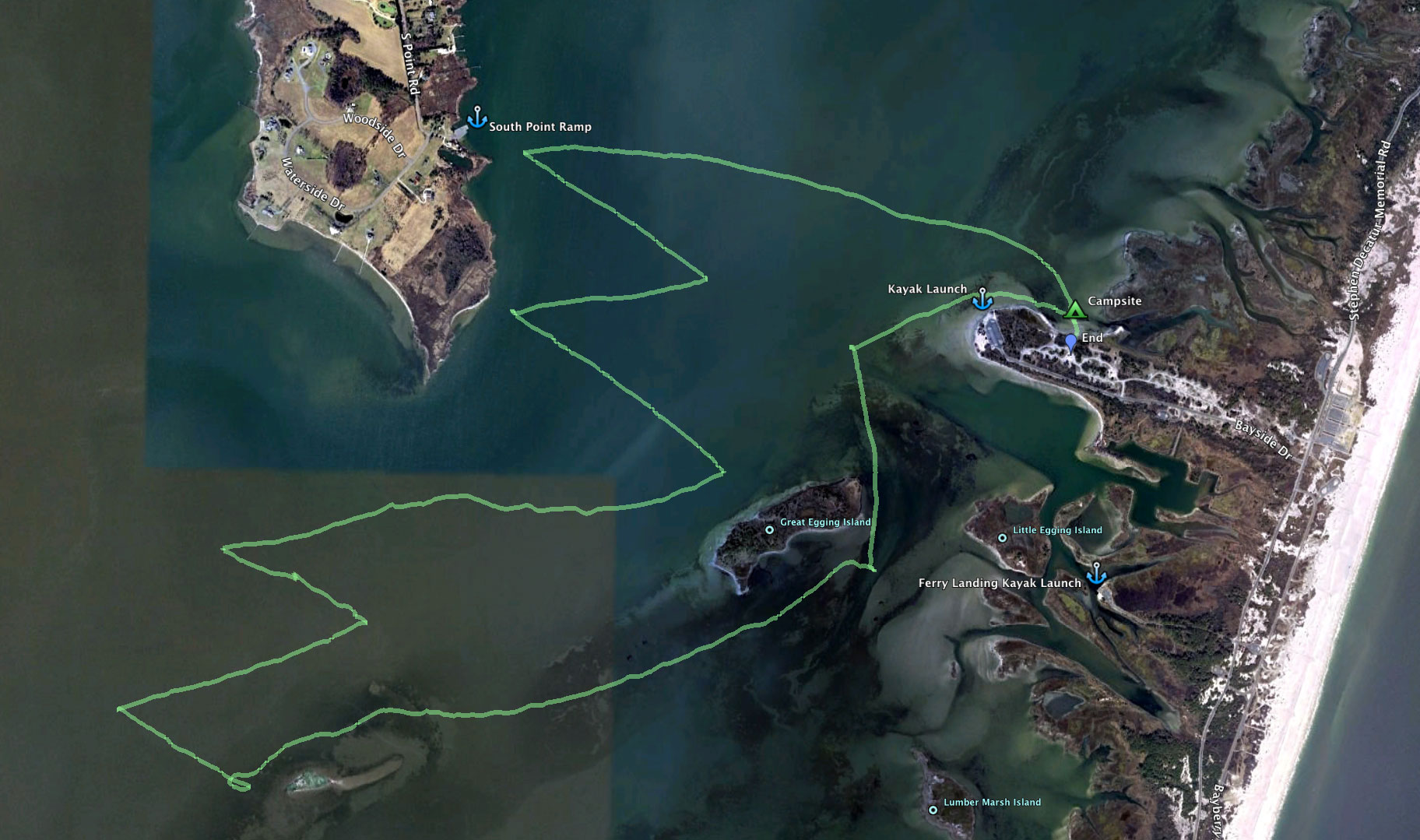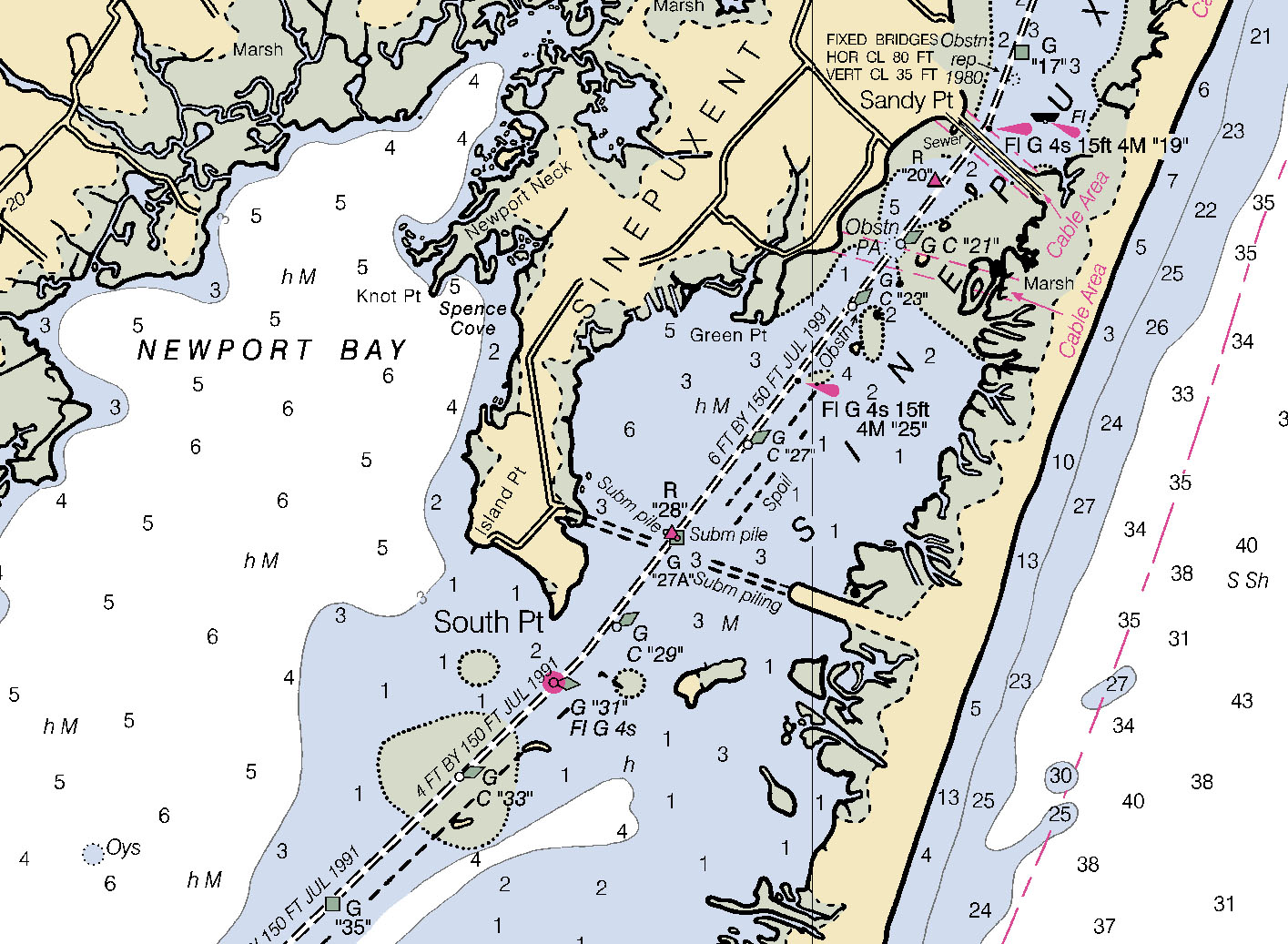As you can see from the video, this was a stunning day on the water. Long steady reaches of 5+ knots in warm wind and calm water. Back and forth across the sound, neck and neck like a team of horses, ducking around islands, ending with a downwind run back to camp. Not bad at all for the end of October.
These boats really are pretty on the water, too. It’s amazing how dry they are with so little freeboard. What water does come in is spray off the bow when beating into the wind. And they just seem to gallop across the water with so little effort, cruising comfortably at hull speed in a modest breeze, as well as conditions that would have you reefed and/or up on the rail in another boat. Two similar boats sailing together is way more than the twice the fun.
Oddly enough, the GPS logs from the two days were almost identical, though the paths taken were nothing alike. Time on the water, about 2 1/2 hours, differed by just ten minutes. And the distance travelled both days? Exactly 8.90 miles. In fact, the difference was within a single foot, the smallest increment my GPS can display. Weird.
Tuesday’s sail track
It also turned out to be a very instructive trip. Tony uses the sail specified in Marc Barto’s plans, modified with a sprit boom, which gives 72 square feet of canvas. This is 10 square feet larger than my Crawford style rig – a full 15% – and most of that is up high. Under most conditions, when it is just the two of us, the extra canvas is enough Tony can slowly but steadily pull away from me. But with Shirley in Candide, too, the extra weight makes us almost perfectly matched.
But, on this day I wasn’t paying attention when rigging up, and fixed both the sprit and the boom on the same side of the sail. I’d heard it makes a difference. The sticks create interference with airflow, so generally you want to put one sprit on each side; otherwise you’ll have a strong tack in one direction and a weak one in the other. Splitting it up balances the handicap. Rather than pull up on the beach to fix it, I decided to keep going and see what happened.
The result was pretty astonishing. On the weak tack, with both sprits deforming the sail, Tony and Shirley just walked away from me. In one crossing of the sound they would end up over 100 yards ahead! But on the strong side, Caesura was so much faster she made up all the distance on the next tack, and gaining. Crazy. I would never have guessed the affect would be so strong.
Maybe next year we’ll see how much difference my topsails make against his bigger main. Maybe by then we’ll have all three Melonseeds on the water.
Soundings in feet
At times we were skimming along in 8 inches of water, miles from shore. This is where the centerboard, for all it’s hassles on land, finally paid off, sliding up and down on the sandy bottom without any need to tend it or worry about it. Tony now had to pay attention for a change, with Shirley raising and lowering the daggerboard as the bottom rose up to say hello. The advantages of either design get balanced out sooner or later, and there are times when you wish you had the other.
Trial and error is still a good teacher, though. I should be able to fine tune the centerboard slot a bit before next season and reduce the occasional jamming. Surprisingly, the culprit is not the unconventional crescent slide for the pin – that part is working great – the issue is rather more mundane. It appears I grossly underestimated how much four coats of dripping paint would reduce clearance of the board in the slot. At the opening, where most of the paint collected, it’s less than a grain of sand on each side. Turning the boat over to clear the two jams this season made it rather obvious that’s not a good idea. Sand suspended in the surf at water’s edge can easily get washed up into the slot, but gets caught on the way out. Same thing if I drag the boat across the beach. Simply fairing back the slot opening and cleaning up paint drips inside the case should help. If more is needed, the boards are thick enough to be shaved down some. Maybe this will make enough difference I won’t need to be as cautious in the future, but a centerboard will never be as foolproof as a simple plank shoved through the slot by hand. As we had the boat rolled up on its side, Tony suggested attaching a short tail of cord at the tip of the board, so you could easily reach under the boat and give it a yank, and I think that’s a fine idea.
The other thing I learned is my old waterproof camera just won’t cut it anymore. It’s beginning to shoot everything off color, turning everything blue. The clips above of Tony and Shirley in Candide were taken with my good DSLR. It was calm enough I took a chance taking it out, and stuck it in a big plastic bag when not in use. Now that I see the results I just can’t go back.





Does your centerboard slot have rubber strips covering it, underwater? When I restored my old Thistle, I used inner-tube rubber (which didn’t lay exactly flat), but I believe you can buy protective strips ready made. The strips are held in place by bronze half-oval.
Can’t help but think a balanced lug rig would work well on a melonseed, less scandalization on the “bad” tack. Easier to reef and strike, too. Might have to try it.
Hey Doryman. You know, I’ve been looking awfully hard at those balanced (balance?) lugs all week. A lot of boats with them out your way, it seems. Certainly a pretty rig on old style boats, especially with a yawl mizzen. And rather fast, from what I hear. Things that make you say, “Hmmmm . . .”
This double sprit is about as easy to set up as you could want, so no points to be gained there. But a larger sail that’s easy to reef has some real appeal. It would be hard to justify replacing the rig on these boats – they easily reach hull speed with the little handkerchiefs, in even lightish wind. But the effect of the sprits on the sail was quite a revelation. As a matter of fact, I was just out in the yard playing with the rig. I have a freestanding marconi mast and sail from an old boat that – OMG – fits perfectly in the mast step. Come Spring I’ll give it a try. That will be an interesting day.
I also thought of rubber flaps on the centerboard slot. Fingers are currently crossed just cleaning up the slot will suffice, with a little prudence. Beaching is a big part of the appeal of these boats for me, though, so if it turns out to be more problem than that I’ll go for it.